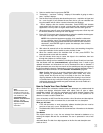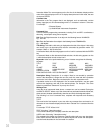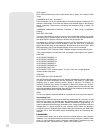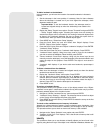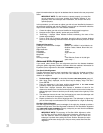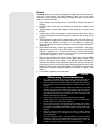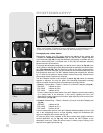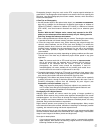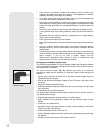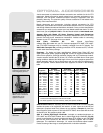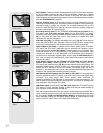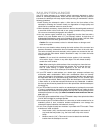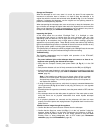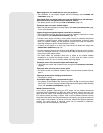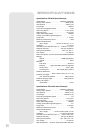
41
Photography through a long lens, such as the ETX, requires special technique for
good results. The photographer should expect to use several rolls film in acquiring this
technique. Long-lens photography has its own rewards, however, which short-focus
lenses cannot duplicate.
A Few Tips on Photography
1.Use the standard tripod or the optional table tripod ( see OPTIONAL ACCESSORIES,
page 43) as a platform for the telescope. At effective focal lengths of 1250mm to
1450mm (ETX-90AT), 1640mm to 1830mm (ETX-105AT) or 1900mm to 2310mm
(ETX–125AT), even small external vibrations can easily ruin an otherwise good
photo.
Caution: With the #64 T-Adapter and a camera body mounted to the ETX
photo port, the telescope can be rotated vertically only 45°. Moving past this
point may damage the telescope and camera.
2. Use a cable-operated shutter release with your camera. Touching the camera body
to operate the shutter will almost certainly introduce undesirable vibrations.
3. Focus the image with extreme care. While observing the subject through the
camera’s reflex viewfinder, turn the ETX's focus knob (
8, Fig. 1) to achieve the
sharpest possible focus. Note that some 35mm cameras may have an optional
focusing screen (available from the manufacturer) for use with a long telephoto
lens. This screen provides a brighter and clearer image to focus and is highly
recommended.
4. Correct shutter speeds vary widely, depending on lighting conditions and film used.
Trial-and-error is the best way to determine proper shutter speed in any given
application.
Note: The camera used with an ETX model may have an exposure meter
that is still active when the standard lens is removed and the body is
connected to the telescope with the T-mount. If used for terrestrial
photography, the camera meter should be acceptable. If used for
astrophotography, the meter probably will not provide good results since
camera meters are not made to compensate for a dark sky.
5. Terrestrial photography through an ETX model is sensitive to heat waves rising
from the Earth’s surface. Long distance photography is best accomplished in the
early morning hours before the earth has had time to build up heat.
6. Photography of the Moon and planets through an ETX model can be especially
gratifying, but points 1 through 4 should be particularly noted in this case. Lunar or
planetary photography requires that the telescope be polar aligned (see
EQUATORIAL (POLAR) ALIGNMENT, page 51).
Note: Long-exposure photography of deep-sky objects is not practical with
an ETX model, since this type of photography requires special electronic and
optical guiding devices not available for this telescope.
Photography with a Digital Camera
Although digital cameras still cannot match the quality of images provided by
traditional 35mm cameras, they provide some significant advantages to the casual
astrophotographer: You do not have to develop the images (instant images), lower
costs, computer and internet readiness. And because unwanted photos are easily
discarded, they provide the freedom to experiment.
Digital cameras present some problems for the astrophotographer: Many models
have lenses that cannot be removed, difficulties in attaching to a telescope, possible
vignetting, lack manual focusing and shorter exposure times.
Shorter exposure times is one of the biggest drawback. Long exposures with digital
cameras introduce undesirable noise and artifacts into a digital image. This limits the
range of astro images to the Moon, planets and bright stars.
Some tips for better photos:
• If you cannot remove the lens to your camera, look for a commercially available
digital t-adapter. New solutions for attaching a digital camera to a telescope are
becoming available as time goes by.



